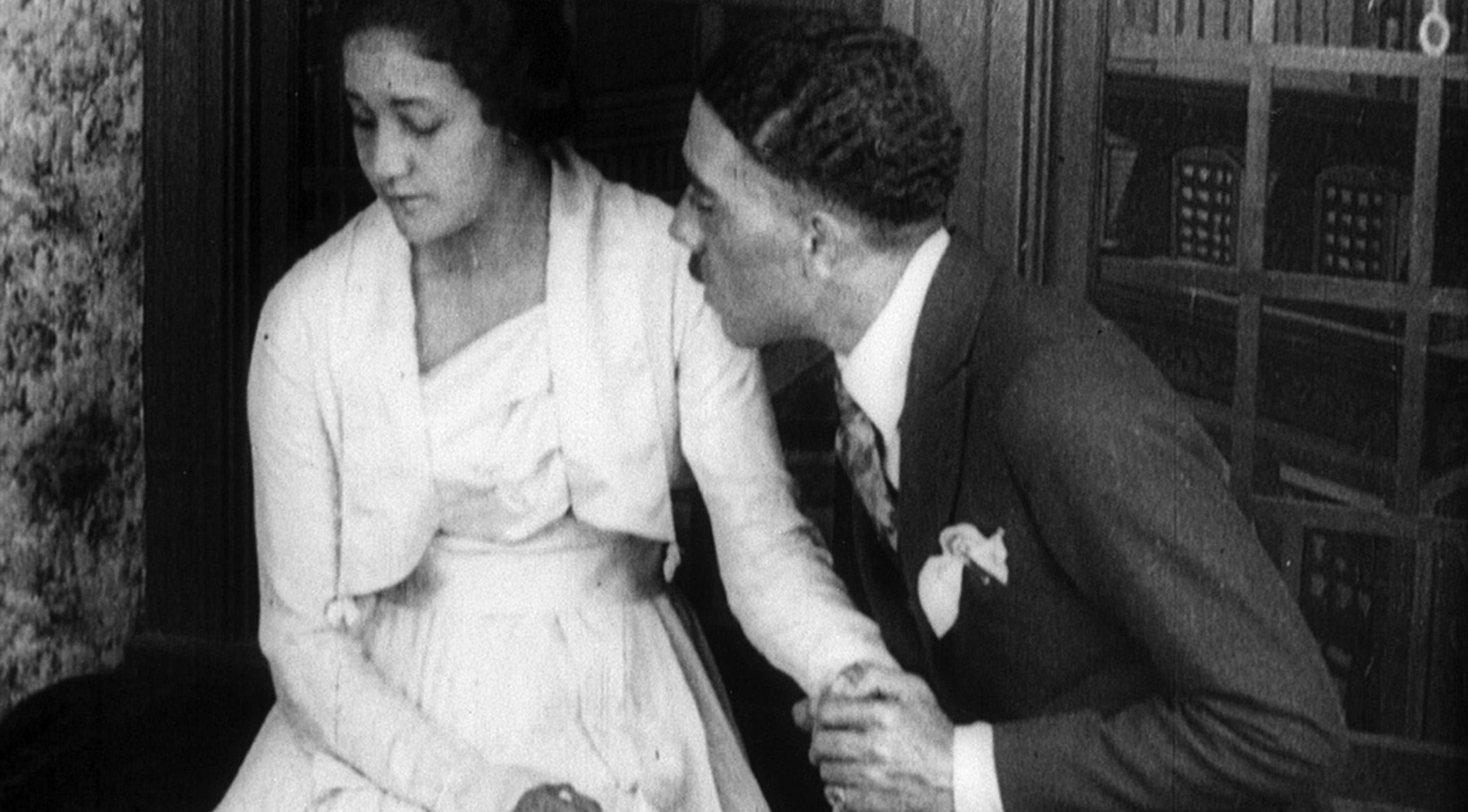Outsiders and Outcasts of Silent Cinema
From Chaplin’s Tramp to Hart’s good-bad man, from Pickford’s ragamuffins to Brooks’s lost girls,
many of silent cinema’s most enduring images were of outcasts and outsiders. Whether portrayed with slapstick humor, grim realism, or experimental lyricism, the outcasts of silent film show the
medium’s power to cultivate empathy as well as a social conscience.
HUGO’S LITERARY MISFITS ON FILM
In 1911, Albert Capellani’s Hunchback of Notre Dame, the oldest surviving adaptation of Victor Hugo’s novel, condensed the entire plot into thirty-six trim minutes. With dance-like gestures and wide-eyed passion, Stacia Napierkowska deepens the horror of Esmeralda’s persecution.
Despite the sanitized plot of 1923’s Hunchback, Lon Chaney’s grotesquely graceful pantomime proved that a visual medium could convey Quasimodo’s inner torment as masterfully as Hugo’s prose. Universal brought another Hugo outcast lavishly to life in The Man Who Laughs. The constraint of using only half his face adds irony and intensity to Conrad Veidt’s performance, with his wounded eyes peering over a frozen grin.
In France, Hugo’s Les Misérables inspired both Capellani and Henri Fescourt, in 1913 and 1925 respectively, to re-create the novel’s scope with ambitiously long films. Throughout the silent era, movies reached beyond the literary masterpieces to explore other misérables, particularly the poor man driven to crime, the orphan, and the fallen woman.
WITH A SMILE A PERHAPS A TEAR
Robbed of their childhoods by poverty, Mary Pickford and Charles Chaplin could play hardship for laughs without trivializing pain. During the The Kid’s separation scene, Chaplin cuts from Coogan’s heartrending panic to an evergreen gag, as one of the Tramp’s opponents conks the other on the head. As orphaned Molly in Sparrows, Pickford’s performance ranges from spunky horseplay to the crushing grief of a woman matured far beyond her years. Molly’s humorously garbled Bible verses and her poignant vision of Jesus act as reminders that Christian salvation extends to the orphaned and indigent.
Both the Tramp and Pickford’s woman-child arrange their homes as drolly patchwork imitations of bourgeois normalcy. In The Kid, Chaplin pokes his head through a bedsheet hole. Voilà! A dressing gown. In Tess of the Storm Country, Pickford tugs a cord with her toe to sweep moth-eaten curtains around her. Fighting the dehumanization of poverty, the Tramp’s dandyish panache and the scrappy determination of Pickford’s urchins defiantly assert their individuality, charming any viewer into loving them.
THE FALLEN WOMAN (OR WAS SHE PUSHED?)
Lois Weber’s Shoes reveals how the physical and psychological strain of poverty drives a young woman to sell herself. Similarly, in Wu Yonggang’s The Goddess, starring Ruan Lingyu, a sex worker’s only means of supporting her son makes her vulnerable to exploitation. In one startling shot, she sits holding her son on the floor while framed between a gangster’s legs, trapped by one man’s brutality and a broader social injustice.
Fallen woman pictures can expose cruel double standards. In D.W. Griffith’s Way Down East, an unwed mother is cast out into a blizzard, but her seducer pays no penalty. Refusing to marry the man who raped her, Thymian in G.W. Pabst’s Diary of a Lost Girl suffers in a reform school then resorts to prostitution—while the rapist prospers.
Given cinema’s tendency to linger on women’s faces, these melodramas epitomize a major strength of silent film. As John Fawell notes in The Hidden Art of Hollywood, without speech, the audience must study faces to discover what’s behind them. The best actresses use the silence to their advantage, drawing us in close but avoiding sensationalism.
ON THE RUN: OUTLAWS REAL AND IMAGINED
Cinema loves outlaws because they must move, covering territory to evade their pursuers. Like Hugo’s Jean Valjean, the hero of Victor Sjöström’s The Outlaw and His Wife stole food out of dire hunger. After escaping prison, he flees to the mountains with his wife. Poetic long shots of their figures dominated by nature convey their estrangement from civilization.
The rugged William S. Hart frequently begins his westerns as a romantic outlaw, riding the open range. As he integrates into society and finds religion in films like The Return of Draw Egan, Hart’s regeneration parallels the taming of the Wild West.
In The Goat and Cops, Buster Keaton’s honest drifter becomes a wanted man for being at the wrong place at the wrong time. These kinetic two-reelers carry a dark subtext: a merciless law enforcement system may condemn an innocent person.
THE COLOR OF THEIR SKIN
Filmed with chaotic, bone-chilling realism, the lynching in Oscar Micheaux’s Within Our Gates depicts the destruction of black families. Falsely accused of killing a rich white man, Jasper Landry escapes into the swamps with his wife and son, only to be hunted down by an angry mob.
In Kenneth Macpherson’s Borderline, starring Paul Robeson, Swiss villagers unfairly blame a black couple for the tragic aftermath of an interracial love affair. One mean-faced woman speaks for the racist majority who drive the husband out of town: “If I had my way, not one Negro would be allowed in the country!”
With his adaptation of Ramona, Chicasaw director Edwin Carewe creates a forceful indictment of systemic violence against Native Americans. Vicious settlers burn Ramona’s village and kill her husband. Her child dies after a white doctor refuses to help. In some of the film’s most haunting shots, the grief-maddened, feverish heroine struggles through brambles with blood streaming down her face—a broken woman deprived of home and family by prejudice.
In his preface to Les Misérables, Hugo wrote, “So long as ignorance and misery remain on earth, books like this will not be useless.” The same can be said of these silent movies.

